

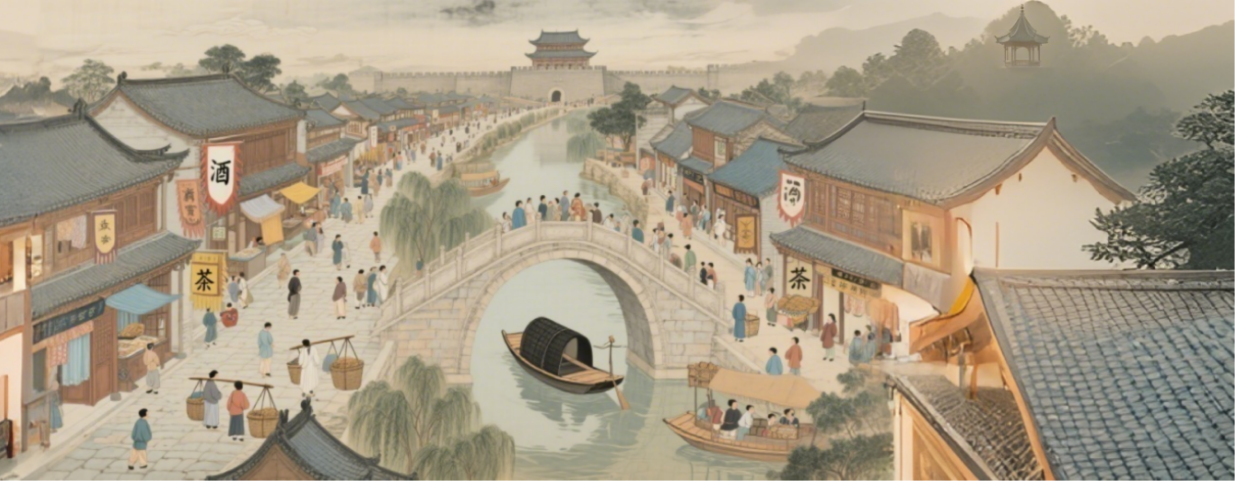
The construction of Lingqu directly served Emperor Qin Shi Huang's military needs in his southern expedition against the Baiyue tribes, and it was a pivotal project in consolidating the central dynasty's rule over Lingnan.
Breaking the predicament of the southern expedition: At the end of the Warring States period, the "Baiyue" tribes in the Lingnan region (covering present-day Guangdong, Guangxi, and northern Vietnam) had not yet submitted to the Qin Dynasty. During the Qin army's southern expedition, due to the barrier of the Nanling Mountains, grain and fodder transportation relied entirely on land routes. The rugged mountain roads and low transportation capacity led to the situation where "soldiers did not take off their armor or relax their crossbows for three years," resulting in slow military progress.
Opening up a strategic passage: After Lingqu was completed in 214 BC, the Qin army entered Lingqu via the Xiangjiang River (a tributary of the Yangtze River) and then transferred to the Lijiang River (a tributary of the Pearl River), realizing the "diversion of Xiang and Li rivers for mutual navigation." Water transportation enabled rapid southward movement of grain, fodder, and troops, allowing the Qin army to quickly turn the tide of the war. Eventually, they pacified the Baiyue tribes, formally incorporated the Lingnan region into the territory of the central dynasty, and achieved political unification between the Central Plains and Lingnan for the first time.
Long-term military support: Since then, Lingqu has become a military passage for successive dynasties to control Lingnan. Whenever there were rebellions in the south or needs for border defense, central armies could quickly deploy troops and supply materials through Lingqu, strengthening the central government's military deterrence over the south and consolidating the unification of the multi-ethnic country.
Lingqu is the world's earliest artificial canal that connects the Yangtze River basin and the Pearl River basin, with unique engineering wisdom and historical value:
A milestone in water system connection: The Yangtze River and the Pearl River are two major independent water systems in southern China. Through its ingenious design (diverting water from the Xiangjiang River to the Lijiang River), Lingqu connected these two basins as a whole for the first time, bridging the "last mile" of China's north-south water transportation. It transformed the water transport between the Central Plains and Lingnan from "isolation" to "direct access".
A model of water conservancy projects: With a total length of 37 kilometers, Lingqu features its core technology "doumen" (equivalent to modern ship locks) — the world's earliest ship lock system. By lifting the water level in stages, it solved the navigation problem caused by the water level difference (about 6 meters) between the Xiangjiang and Lijiang rivers, predating the earliest European ship locks by more than 1,000 years. This design of "saving water with locks and enabling navigation with water" reflects the ancient craftsmen's precise grasp of hydrology and mechanics, serving as a model for later water conservancy projects.
Historical continuity: From the Qin Dynasty until the rise of railways and highways in modern times, Lingqu remained a main north-south water transport route in continuous operation for over 2,000 years. It is one of the longest-used artificial canals in Chinese history, with stability and practicality far surpassing other contemporary water conservancy projects in the world.
The construction of Lingqu directly served Emperor Qin Shi Huang's military needs in his southern expedition against the Baiyue tribes, and it was a pivotal project in consolidating the central dynasty's rule over Lingnan.
Breaking the predicament of the southern expedition: At the end of the Warring States period, the "Baiyue" tribes in the Lingnan region (covering present-day Guangdong, Guangxi, and northern Vietnam) had not yet submitted to the Qin Dynasty. During the Qin army's southern expedition, due to the barrier of the Nanling Mountains, grain and fodder transportation relied entirely on land routes. The rugged mountain roads and low transportation capacity led to the situation where "soldiers did not take off their armor or relax their crossbows for three years," resulting in slow military progress.
Opening up a strategic passage: After Lingqu was completed in 214 BC, the Qin army entered Lingqu via the Xiangjiang River (a tributary of the Yangtze River) and then transferred to the Lijiang River (a tributary of the Pearl River), realizing the "diversion of Xiang and Li rivers for mutual navigation." Water transportation enabled rapid southward movement of grain, fodder, and troops, allowing the Qin army to quickly turn the tide of the war. Eventually, they pacified the Baiyue tribes, formally incorporated the Lingnan region into the territory of the central dynasty, and achieved political unification between the Central Plains and Lingnan for the first time.
Long-term military support: Since then, Lingqu has become a military passage for successive dynasties to control Lingnan. Whenever there were rebellions in the south or needs for border defense, central armies could quickly deploy troops and supply materials through Lingqu, strengthening the central government's military deterrence over the south and consolidating the unification of the multi-ethnic country.
Lingqu is the world's earliest artificial canal that connects the Yangtze River basin and the Pearl River basin, with unique engineering wisdom and historical value:
A milestone in water system connection: The Yangtze River and the Pearl River are two major independent water systems in southern China. Through its ingenious design (diverting water from the Xiangjiang River to the Lijiang River), Lingqu connected these two basins as a whole for the first time, bridging the "last mile" of China's north-south water transportation. It transformed the water transport between the Central Plains and Lingnan from "isolation" to "direct access".
A model of water conservancy projects: With a total length of 37 kilometers, Lingqu features its core technology "doumen" (equivalent to modern ship locks) — the world's earliest ship lock system. By lifting the water level in stages, it solved the navigation problem caused by the water level difference (about 6 meters) between the Xiangjiang and Lijiang rivers, predating the earliest European ship locks by more than 1,000 years. This design of "saving water with locks and enabling navigation with water" reflects the ancient craftsmen's precise grasp of hydrology and mechanics, serving as a model for later water conservancy projects.
Historical continuity: From the Qin Dynasty until the rise of railways and highways in modern times, Lingqu remained a main north-south water transport route in continuous operation for over 2,000 years. It is one of the longest-used artificial canals in Chinese history, with stability and practicality far surpassing other contemporary water conservancy projects in the world.


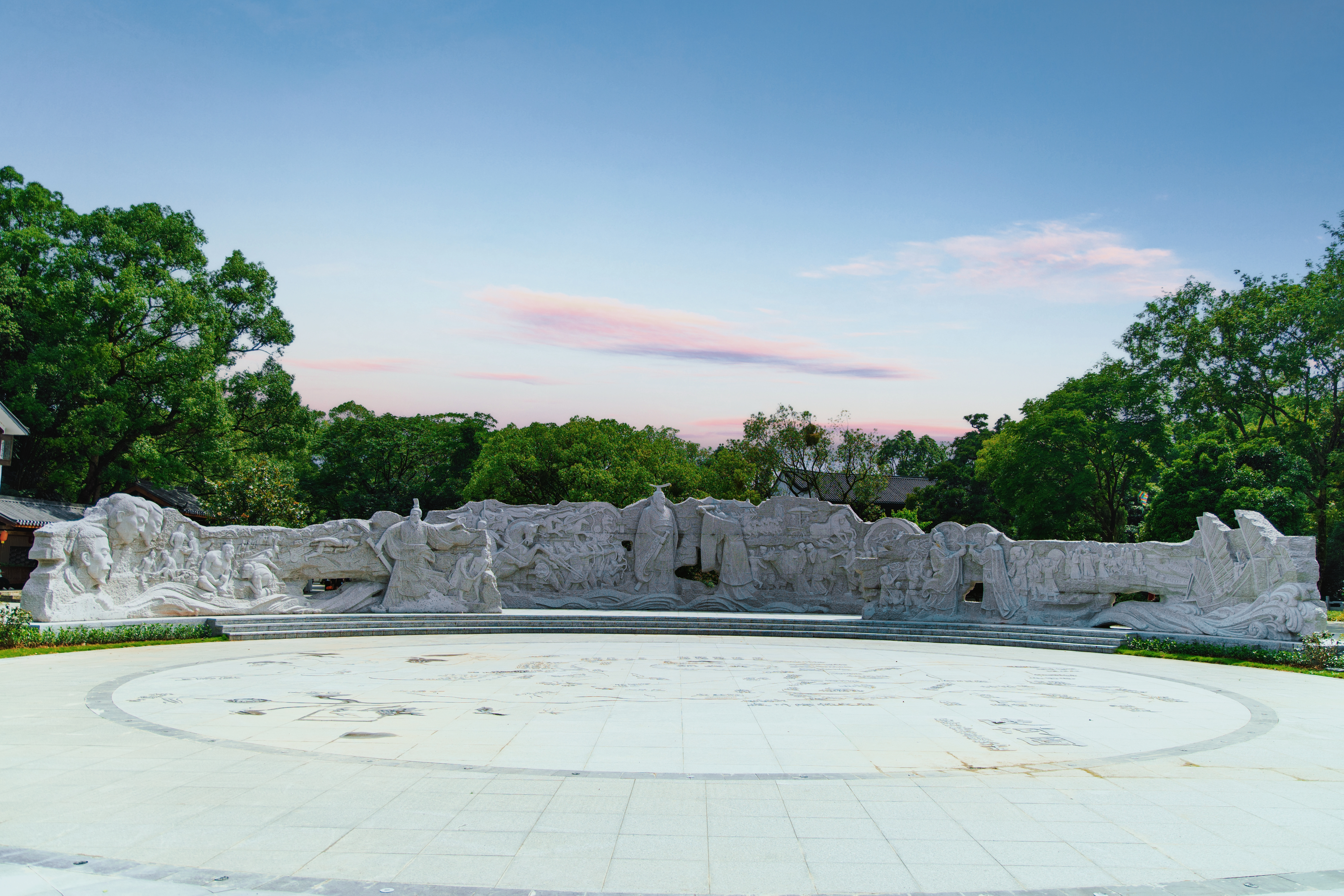
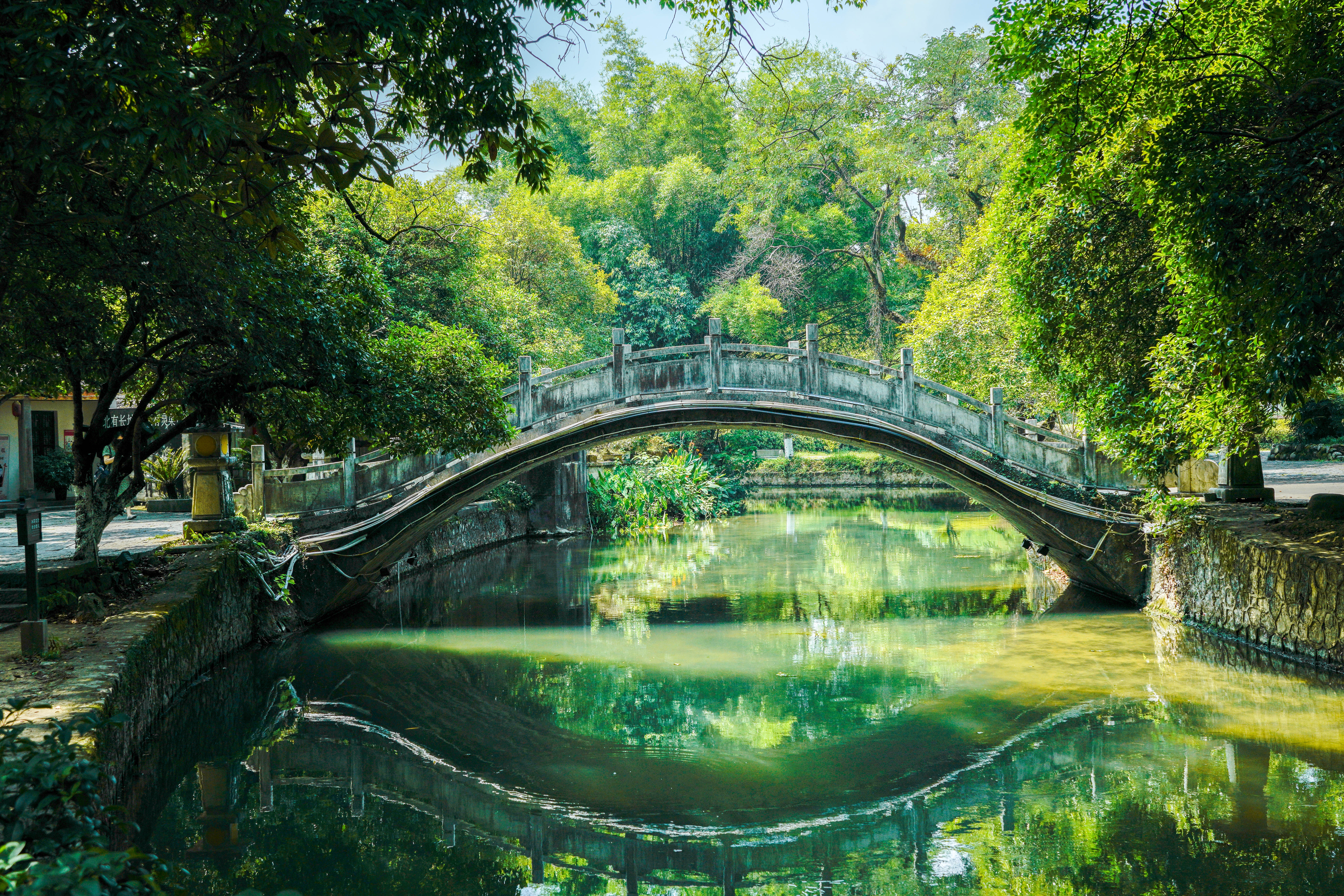
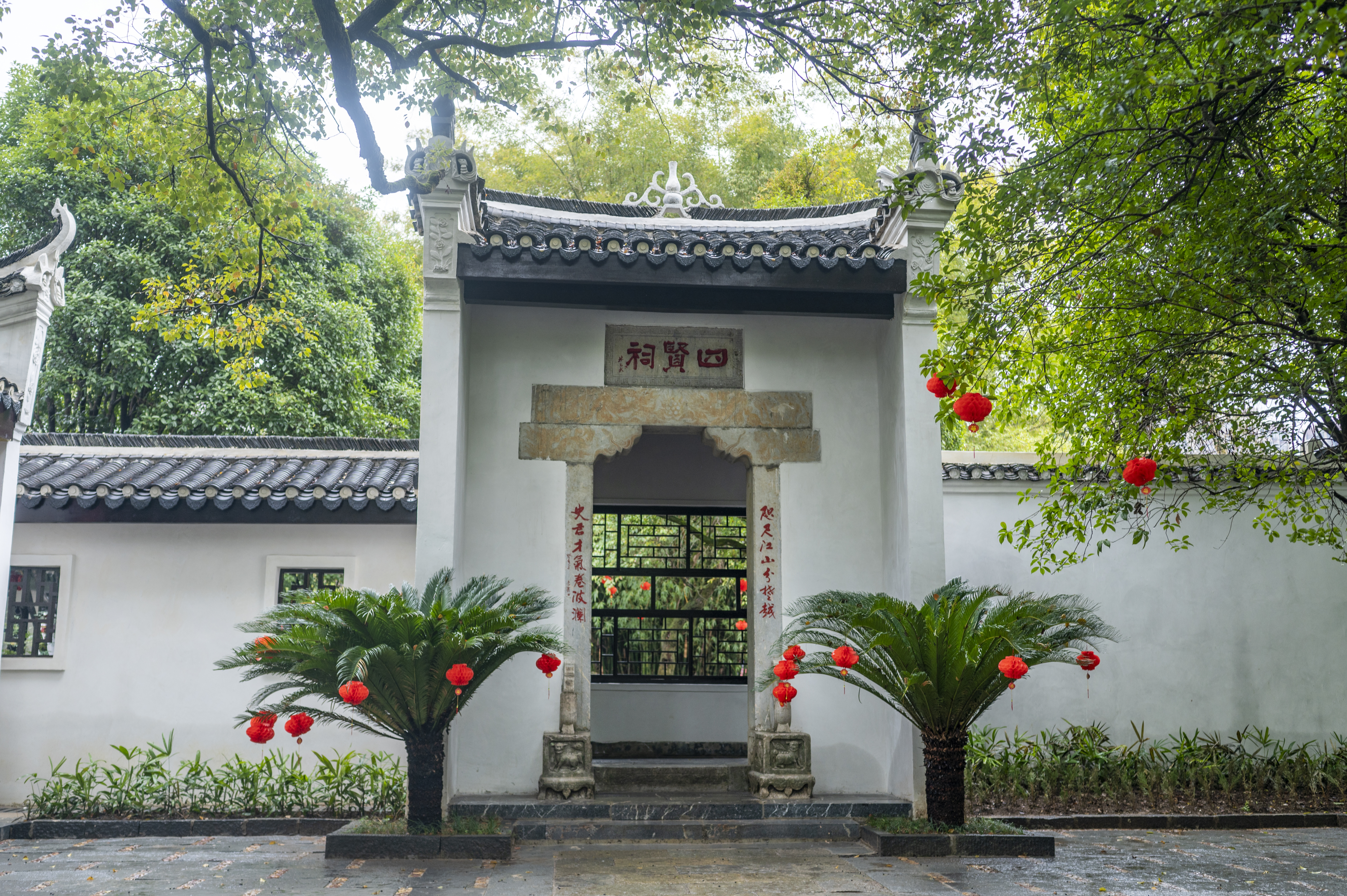
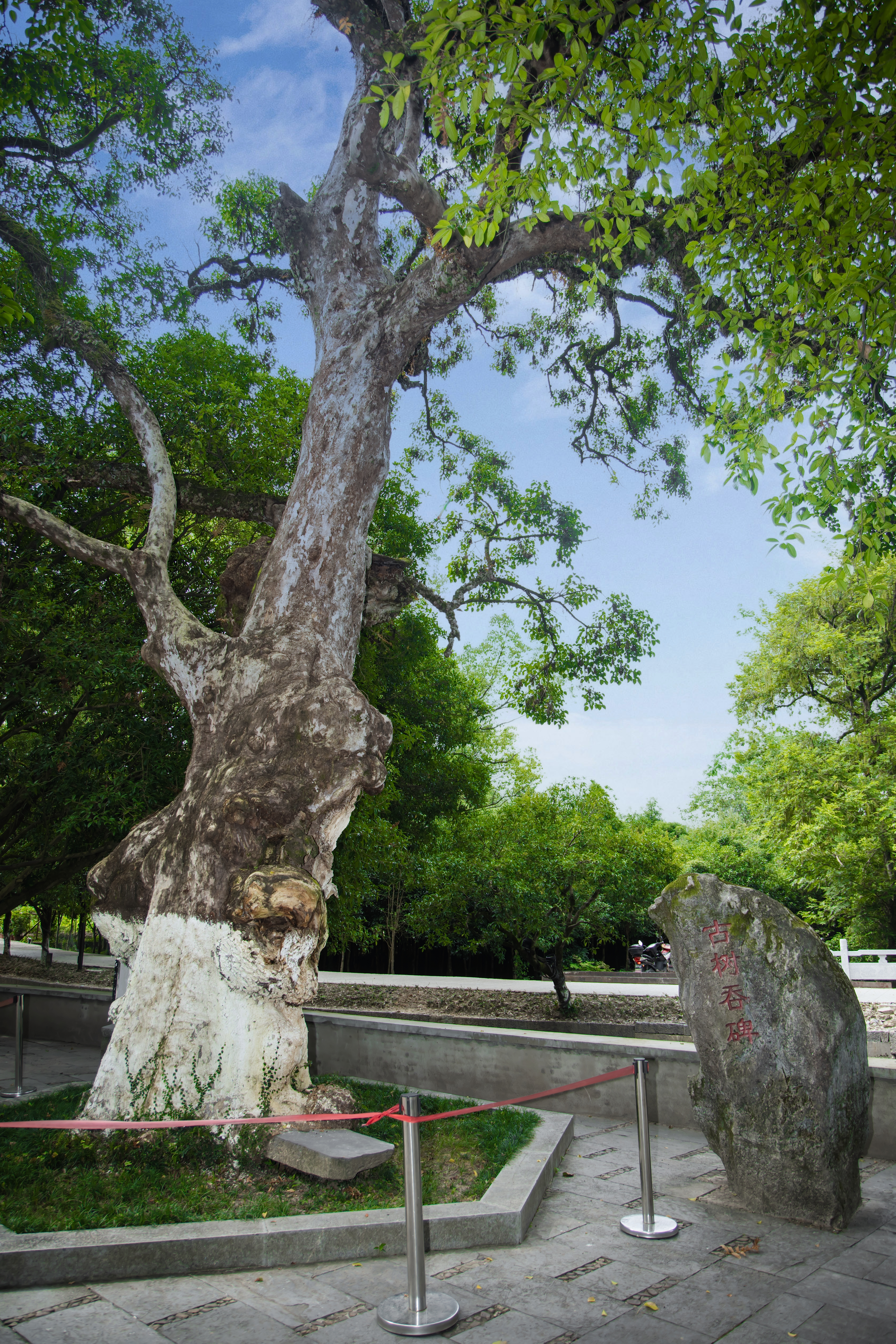
Lingqu Lansheng displays its historical value in three chapters based on the water of Lingqu. The relief in the central section of the back row is Chapter 1, themed by unifying Lingnan and strengthening the border, showing the background of the first emperor of the Qin Dynasty who expanded territory, as well as the scene of assigning Shi Lu to build Lingqu. The relief on the left side of the front row is Chapter 2, and focuses on water conservancy and transport, telling the heroic deeds of Shi Lu leading the three generals and soldiers to dig Lingqu. The relief on the right side of the front row is Chapter 3, and connects the scenes, such as ethnic unity, transit of Annam envoys, and gathering of merchants, which describes the significant contributions made by Lingqu to the development of the Maritime Silk Road.
Meiling Bridge is a white marble arch bridge with exquisite appearance. In August, 1941, Chiang Kai-shek and his wife (Soong May-ling) visited Lingqu. When passing through the South Canal, Soong May-ling found that the bridge with wood &bamboo structure was very unsafe, so she proposed to build a stone arch bridge. After the completion of the bridge, the bridge was called “Meiling Bridge” to express the gratitude to Soong May-ling for her concern about Lingqu.
Sixian Ancestral Temple, also known as Lingji Temple, was built in the 15th year during Zhizheng Period of the Yuan Dynasty (1355). The temple enshrined four sages who made meritorious contributions to the excavation and maintenance of Lingqu, including Shi Lu as the investigating censor of the Qin Dynasty, General Fubo (Ma Yuan) of the Han Dynasty, Li Bo as Guiguan Observation Officer of the Tang Dynasty, and Yu Mengwei as the defense censor, hence the name. It was constructed when Yeerjini as the vice director of Guangxi Department of Supervision & Clean Governance built Lingqu. The tablet of Lingji Temple Records written by Huang Chang of the Yuan Dynasty is still preserved today. In the past dynasties, the temple has been renovated for many times. The present Sixian Ancestral Temple was rebuilt in 1985.
This is Bischofia polycarpa, and is more than 780 years old. The tree trunk is covered with knots, but the leaves are lush, full of vitality. Strangely, the tree swallows one third of the inscription tablet of Statues Black God and Mercury that were installed in the 12th year during the reign of Emperor Qianlong (1747). The tablet is parallel to the ground, and is suspended about 30 centimeters above the ground. Nowadays, one third of the stone tablet has been swallowed by the tree trunk, with the remaining two thirds exposed outside the tree. This tree continues to “swallow” the stone tablet at a rate of one centimeter every three years. It is expected that, the tablet will be fully enveloped by the ancient tree within about 200 years.
